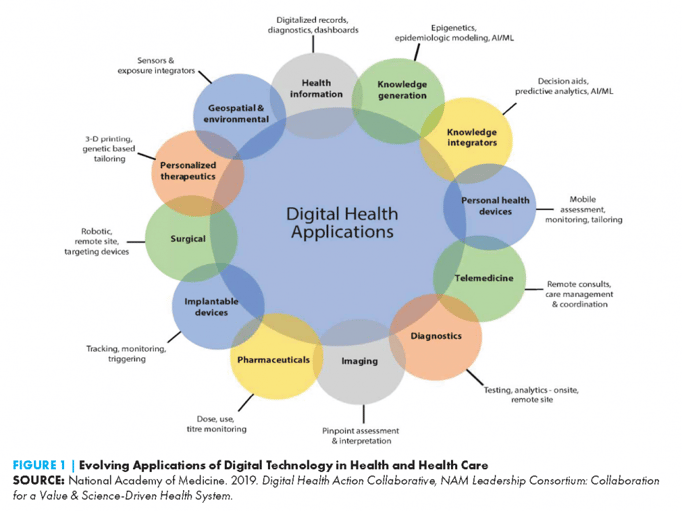
Physical therapy is a human-centered profession. The essential components of physical therapy include:
Physical therapists are skilled at developing and nurturing the therapeutic alliance to maximize the benefit to their patients. On a large scale, PTs are challenged by the reality of time and finance, compounded by a long-standing limited supply of physical therapists (1). Physical therapy is not unique in this challenge, and other professions have already begun to solve it using technology.
A common analogy is that accountants are still needed, despite the proliferation of tax preparation software. Consumer-grade software brought certified accountant-quality accuracy to many more people but did not replace accountants. Accountants are required to solve complex problems using more powerful tax preparation software than is available to consumers. Similarly, professional sports coaches rely on motion analysis data. Still, trainers are needed to apply the data to the human athlete. The motion analysis lab requires trained professionals to conduct accurate tests and interpret the results of cameras and software. The human-centered physical therapy profession is also positioned to benefit from using technology for precision and scalability while retaining the human aspect of clinical decision-making and interpersonal relationship.
The answer lies in the burgeoning field of digital health. Digital health is the use of information and communication technology to support both individual health and the healthcare industries. With such a broad definition, digital health encompasses telehealth, mobile medical apps, wearables, software that drives health applications, health information, and information security.

The COVID-19 pandemic inspired a rapid interest in digital health, with telehealth enabling PTs to see patients when face-to-face visits were discouraged. Secure video platforms became rapidly accessible, and PTs worldwide adapted their evaluation and treatment strategies to instruction, observation, and feedback. Two years later, telerehabilitation is widely accepted in healthcare (2), and new applications of digital health technologies are shaping healthcare. Artificial intelligence (AI) and machine learning (ML) are being used to personalize medical care based on pools of data, reducing variability in some medical decisions. For example, an application that is used 100 times captures 100 instances of data that comprise the pool of experience. That pool can be used to calculate personalized information such as risk of injury or performance ability of each user. Additionally, it allows for normative data to be generated and utilized for benchmarking and goal setting. Instead of the months or years it might take for a single clinician to see 100 instances of that type of patient, the software has “learned” based on its 100 trials and presents its learning to the clinician. The clinician can then apply the data for treatment and goal planning for the individual patient.
Technology-assisted treatment can enhance the appeal and effectiveness of both clinic and home programs. DTx is the subset of digital health that the Digital Therapeutics Alliance defines as “delivering evidence-based therapeutic interventions to patients that are driven by software to prevent, manage, or treat a medical disorder or disease. They are used independently or in concert with medications, devices, or other therapies to optimize patient care and health outcomes.” (3) Software may be used to measure, track and gamify physical therapy programs, and software packaged in mobile apps is potentially accessible to most of the US population. DTx may extend the reach of physical therapy, helping to fill the demand/supply gap mentioned earlier.
Chronic health conditions requiring high engagement over a predictable and prolonged course of therapeutic intervention are ideal for DTx applications and perform well in clinical trials. Nabutovsky et al. found that most people, including the elderly, can use a remote digital cardiac rehabilitation program (4). Patients with Parkinson’s Disease may use an app that delivers music to assist with the cadence of walking as part of their home practice between physical therapy sessions (5). Patients who need exercise guidance may access smartphone app products that deliver exercise prescriptions and lifestyle interventions. Virtual reality is another DTx that is performing well in clinical trials for procedural pain management, especially in pediatrics (6).
Some clinicians may worry that technology may replace their human care. As we have discussed, human clinical decision-making is a key factor in the success of digital health. Human care providers must interpret results and provide fully individualized complex care where technology cannot. Despite the sophistication of digital health technology, the human brain is still capable of more complex decision-making on an individual level. Digital health applications reduce variability and error in common, less complex health problems, reserving the clinician’s care capability for more complex health problems. Digital health technology can improve and enhance medical care, but it does not replace human care. Technology combined with PT is an improvement over either technology or PT alone.
Demand for Physical Therapists Outweighing Supply. Available at https://www.passportusa.com/blog/demand-physical-therapists-outweighing-supply#:~:text=On%20the%20basis%20of%20current,increase%20from%2012%20to%2048. Accessed on July 15, 2022.
Seron P, Oliveros MJ, Gutierrez-Arias R, et al. Effectiveness of Telerehabilitation in Physical Therapy: A Rapid Overview. Phys Ther. 2021;101(6):pzab053. doi:10.1093/ptj/pzab053. Available at https://pubmed.ncbi.nlm.nih.gov/33561280/. Accessed on July 18, 2022.
Dang A, Arora D, Rane P. Role of digital therapeutics and the changing future of healthcare. J Family Med Prim Care. 2020 May 31;9(5):2207-2213. doi: 10.4103/jfmpc.jfmpc_105_20. PMID: 32754475; PMCID: PMC7380804. Available at https://www.ncbi.nlm.nih.gov/pmc/articles/PMC7380804/. Accessed on July 15, 2022.
Nabutovsky I, Nachshon A, Klempfner R, Shapiro Y, Tesler R. Digital Cardiac Rehabilitation Programs: The Future of Patient-Centered Medicine. Telemed J E Health. 2020;26(1):34-41. doi:10.1089/tmj.2018.0302. Available at https://pubmed.ncbi.nlm.nih.gov/30789311/. Accessed on July 15, 2022.
Ellis TD, Earhart GM. Digital Therapeutics in Parkinson's Disease: Practical Applications and Future Potential. J Parkinsons Dis. 2021;11(s1):S95-S101. doi: 10.3233/JPD-202407. PMID: 33646177; PMCID: PMC8292155. Available at https://www.ncbi.nlm.nih.gov/pmc/articles/PMC8292155/. Accessed on July 15, 2022.
Tas FQ, van Eijk CAM, Staals LM, Legerstee JS, Dierckx B. Virtual reality in pediatrics, effects on pain and anxiety: A systematic review and meta-analysis update. Paediatr Anaesth. 2022 Dec;32(12):1292-1304. doi: 10.1111/pan.14546. Epub 2022 Sep 1. PMID: 35993398./ Accessed on November 10, 2022